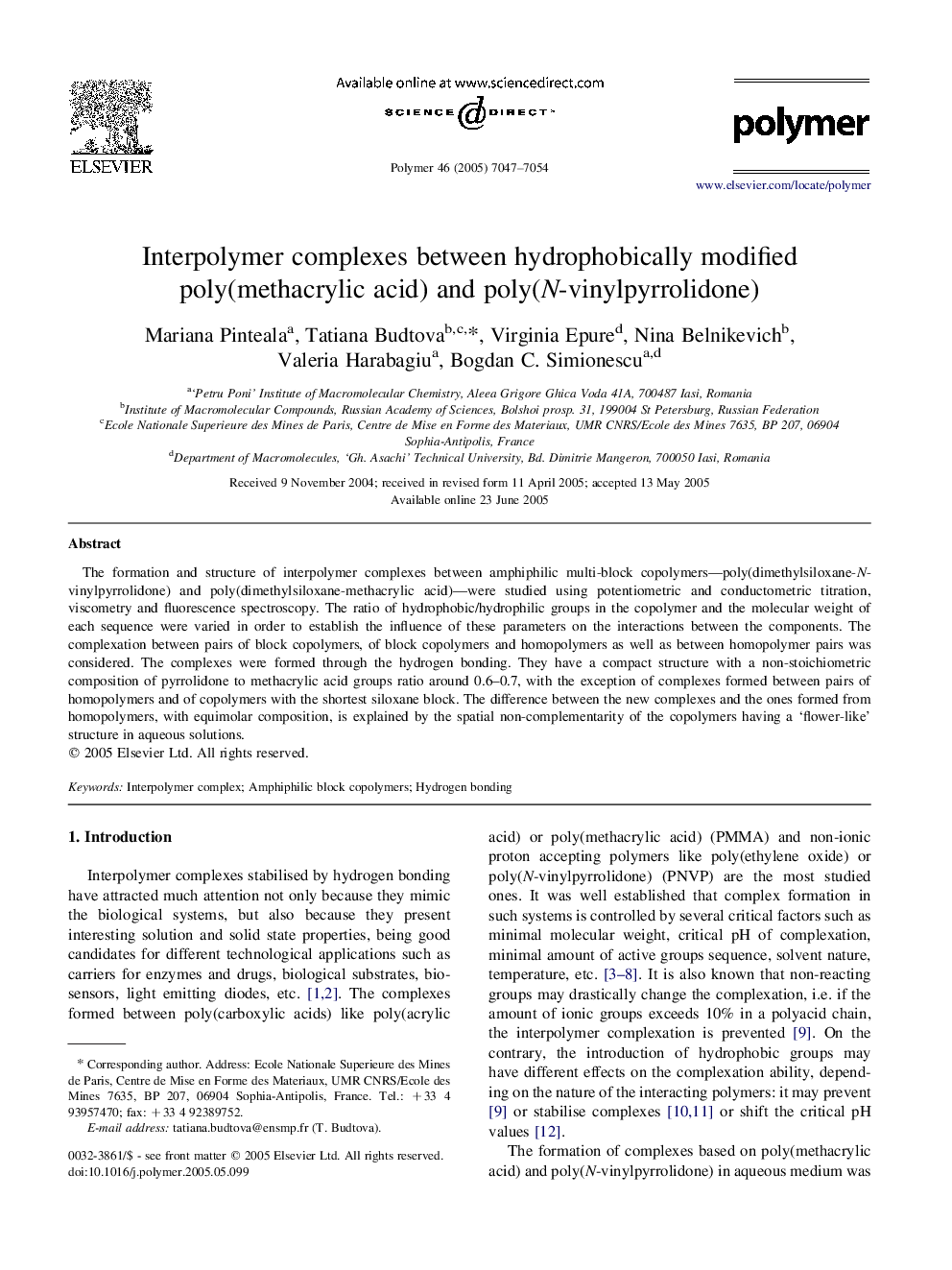| Article ID | Journal | Published Year | Pages | File Type |
|---|---|---|---|---|
| 5191199 | Polymer | 2005 | 8 Pages |
Abstract
The formation and structure of interpolymer complexes between amphiphilic multi-block copolymers-poly(dimethylsiloxane-N-vinylpyrrolidone) and poly(dimethylsiloxane-methacrylic acid)-were studied using potentiometric and conductometric titration, viscometry and fluorescence spectroscopy. The ratio of hydrophobic/hydrophilic groups in the copolymer and the molecular weight of each sequence were varied in order to establish the influence of these parameters on the interactions between the components. The complexation between pairs of block copolymers, of block copolymers and homopolymers as well as between homopolymer pairs was considered. The complexes were formed through the hydrogen bonding. They have a compact structure with a non-stoichiometric composition of pyrrolidone to methacrylic acid groups ratio around 0.6-0.7, with the exception of complexes formed between pairs of homopolymers and of copolymers with the shortest siloxane block. The difference between the new complexes and the ones formed from homopolymers, with equimolar composition, is explained by the spatial non-complementarity of the copolymers having a 'flower-like' structure in aqueous solutions.
Related Topics
Physical Sciences and Engineering
Chemistry
Organic Chemistry
Authors
Mariana Pinteala, Tatiana Budtova, Virginia Epure, Nina Belnikevich, Valeria Harabagiu, Bogdan C. Simionescu,
